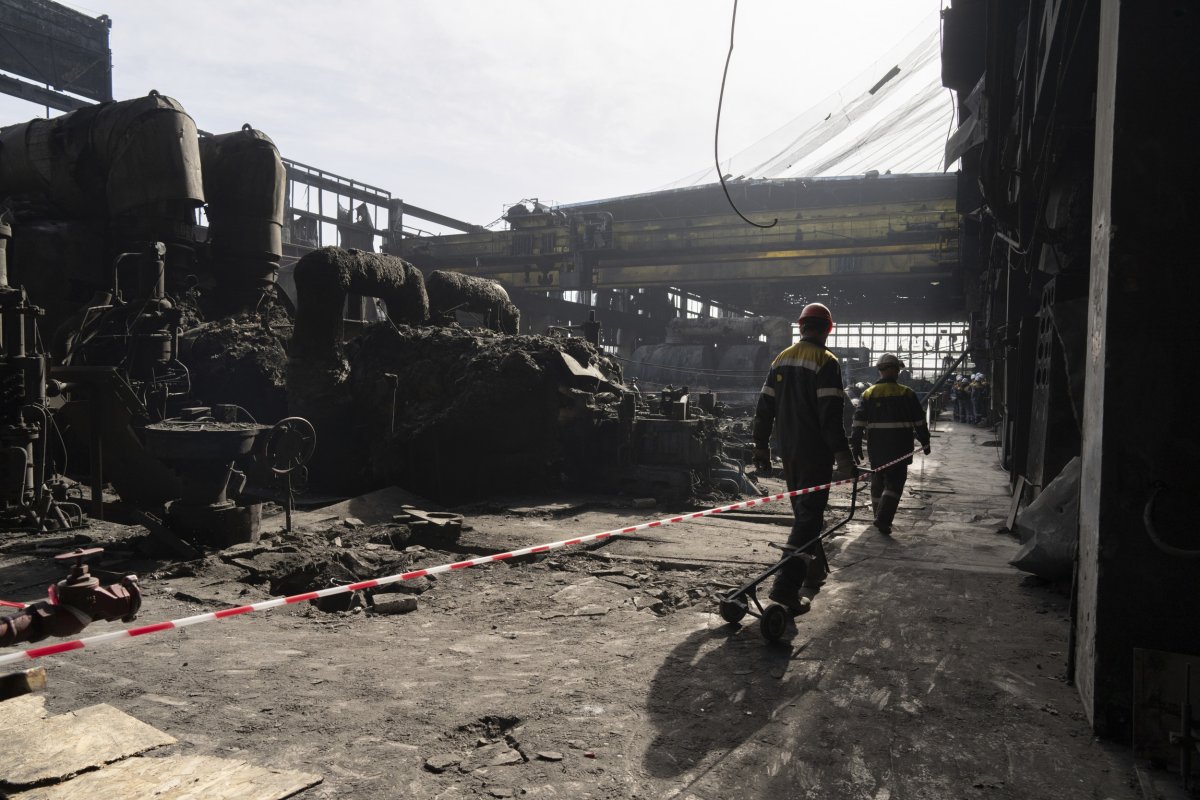Amid relentless Russian missile attacks targeting Ukraine's energy infrastructure, Maxim Timchenko, CEO of DTEK, Ukraine's largest private energy company, has been leading efforts to restore power. In an interview during the U.N. climate talks in Azerbaijan, Timchenko shared data on a back-and-forth battle showing how electricity generation rises and falls with every rebuild and subsequent attack.
The war, now nearing its third year, has ravaged vast areas of Ukraine, but has also accelerated the adoption of renewable energy. "What other choice do we have?" Timchenko asked. "Sit and wait and pray that they don't hit us, or do our job and bring lights back to our people?"
At COP29, Ukraine's pavilion features a shattered solar panel-a stark reminder of destruction while remaining a symbol of resilience.
Unlike traditional coal-fired plants that are centralized and vulnerable to attacks, decentralized renewable energy systems—including wind and solar—offer quicker recovery options that are harder for Russia to cripple.

Swift Rebuilding Through Renewables
When Russian strikes hit two DTEK solar farms in the spring, it took only seven days to restore power by replacing damaged panels and transformers. In contrast, rebuilding a similarly affected coal-fired plant required three to four months.
"That's the difference between centralized and so-called decentralized generation. It's much more resistant and difficult to destroy," said Timchenko.
Russian attacks on energy infrastructure have shifted tactics since March, targeting generation facilities after earlier attempts to disrupt transformers proved ineffective.
Geoffrey Pyatt, assistant secretary of the U.S. State Department's Bureau of Energy Resources, noted that 50 percent of Ukraine's power generation capacity has been knocked out. Despite this, nuclear, hydropower, and newly constructed renewable projects continue to provide critical electricity.
Global Partnerships for Energy Reconstruction
International partnerships have been pivotal in rebuilding Ukraine's energy systems. Companies such as GE Vernova and Honeywell are collaborating with DTEK on wind and battery storage projects.
Roger Martella, GE Vernova's chief sustainability officer, praised Ukraine's unprecedented efforts to maintain its grid under wartime conditions.
"We're humbled by the fact that Ukraine has done something no one has ever done before," Martella said during a panel at COP29.

Renewable Energy: A Beacon of Hope
Pyatt highlighted the G7's strong support for Ukraine's energy infrastructure. While cautious about the incoming Trump administration's stance, he expressed confidence that partnerships with major U.S. firms would bolster long-term reconstruction efforts.
According to Pyatt, Ukraine's pivot to renewables exemplifies resilience and innovation amid adversity, with decentralized systems not only offering faster recovery but also representing a strategic shift, ensuring energy independence in the face of ongoing aggression.
"If you start to get big American companies like GE and Honeywell involved, there's going to be billions of dollars of energy reconstruction," Pyatt said.
This article includes additional reporting from The Associated Press











-in-MY-OLD-ASS-Photo-Courtesy-of-Amazon-Studios_Prime-Video-%C2%A9-AMAZON-CONTENT-SERVICES-LLC.jpg?mbid=social_retweet)








 English (US) ·
English (US) ·